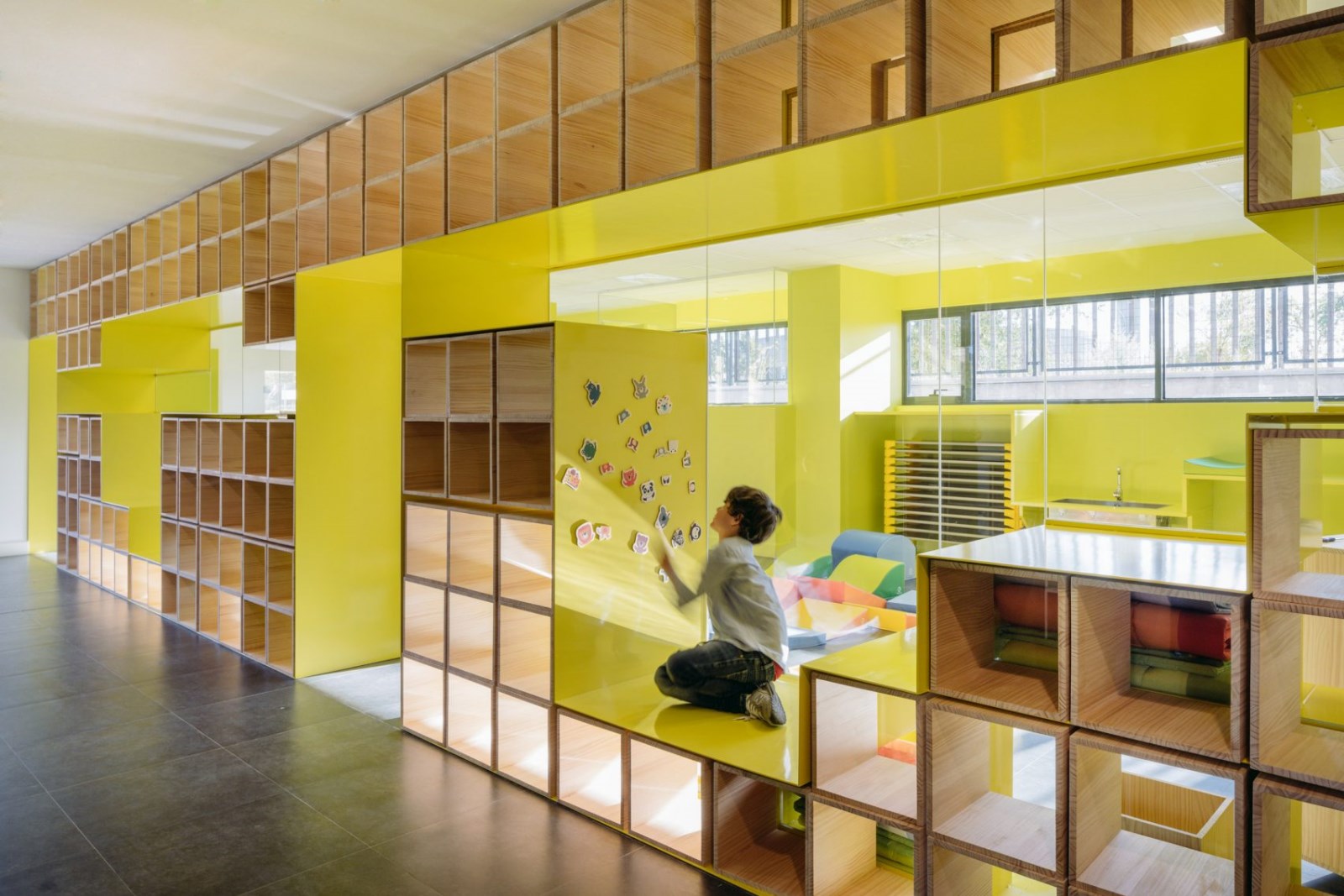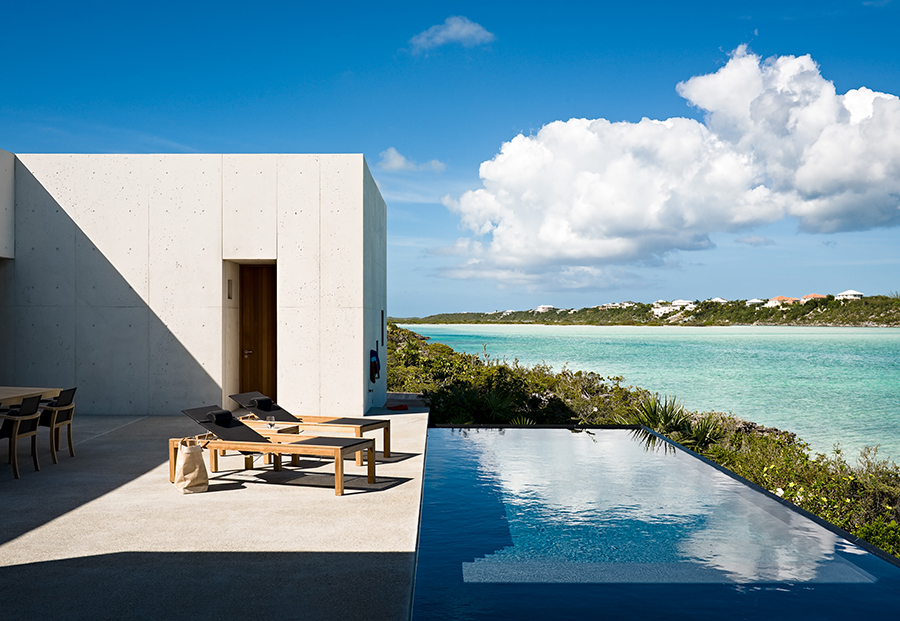Collage House S+PS Architects
2016-04-24 20:00
Courtesy of S+PS Architects
S PS建筑师提供


架构师提供的文本描述。生活在印度孟买的人们不可能忽视这座城市的非正规住区,如果仔细观察,就会发现在节俭、适应性、多任务处理、足智多谋和独创性方面有很多可借鉴的经验。一种视觉语言出现了,它是被发现的对象,临时的,折中的,补丁的和拼贴的.有人试图在这里应用这些课程中的一些,而不把它们浪漫化或崇拜。该项目以多种方式研究回收和拼贴的想法,从非常物理的材料、能源等方面进行研究。以无形的历史,空间和记忆。前面的门面为里面的东西定下了基调,有一个“窗户的角落”,可以回收旧的窗户和城市中被拆毁的房屋的门。这成为一个主要的背景客厅,暴露的混凝土面天花板上方,与抛光的白色大理石与复杂的黄铜镶嵌在地板上。金属管剩菜像竹子一样拼凑在一起,形成了一个“管壁”,把结构柱、雨水管道和喷口雕塑结合在一起,在季风中,这些都是所有感官的乐趣。
Text description provided by the architects. Living in Mumbai, India it is impossible to ignore the informal settlements in the city, and if looked at closely there are many lessons to be learnt in frugality, adaptability, multi-tasking, resourcefulness and ingenuity. A visual language emerges that is of the found object, ad-hoc, eclectic, patched and collaged. An attempt has been made here to apply some of these lessons without romanticizing or fetishizing them. The project looks at the idea of recycling and collage in several ways, from the very physical - like materials, energy, etc. to the intangible - like history, space and memories. The front façade sets the tone for what lies within, with a “corner of windows” that recycles old windows and doors of demolished houses in the city. This becomes a major backdrop for the living room with a exposed concrete faceted ceiling above countered by the polished white marble with intricate brass inlay on the floor. Metal pipe leftovers pieced together like bamboo form a “pipe wall” integrating structural columns, rainwater downtake pipes and a sculpture of spouts that in the monsoon are a delight for all the senses.
Courtesy of S+PS Architects
S PS建筑师提供


Courtesy of S+PS Architects
S PS建筑师提供


在中央院落一侧的废锈金属板被铆接在一起,基奇彩色瓷砖样本在中间保留一个播种机,而第三面则是一堵墙-从石料切割场的背面升起的废石条和现场产生的废物。一座被拆除的房子里有百年历史的柱子让人回忆起往事,怀旧的氛围中孕育着一座轻巧、钢铁和玻璃的亭子(上面有太阳能电池板),在露台上俯瞰山坡上美丽的景色。这种方法在内部材料和元素上再次得到加强。它夸大了旧与新、传统与当代、粗糙与成品之间的反差。人们可以找到回收材料,如旧的纺织块、旧缅甸柚木耙和弹子地板、殖民家具、织物废料(Chindi),以及使用传统元素和材料的新方法,如雕刻的木制模塑、斜面镜子、传统水泥砖等。
In the central courtyard on one side scrap rusted metal plates are riveted together, Kitsch colored tile samples retain a planter in the middle and on the third side is a wall clad in cut-waste stone slivers lifted off the back of stone cutting yards and waste generated on site. Hundred-year-old columns from a dismantled house bring back memories, and nostalgia is nourished with a lightweight, steel and glass pavilion (with solar panels above) on the terrace level overlooking fabulous views down the hillside. This approach is reinforced again in the interior materials and elements. It plays up this contrast between the old and the new, the traditional and the contemporary, the rough and the finished. One finds use of recycled materials like old textile blocks, Flooring out of old Burma teak rafters and purlins, colonial furniture, fabric waste (chindi) along with new ways of using traditional elements and materials like carved wooden mouldings, beveled mirrors, heritage cement tiles, etc.


出现了一种语言,它既新又陌生,同时又让我们重新思考我们认为理所当然的美的概念。为了使这一变化更“可接受”,它被包裹在“现代性的装束”(尼赫鲁)。这个混凝土框架-在一个粗糙的聚合完成外面和光滑的形式内完成-包裹和连接所有的空间从后面到前面和跨越所有三个层次。
A language emerges that is both new but strangely familiar at the same time and that makes us rethink notions of beauty that we take for granted around us. To make this mélange more “acceptable”, it is encased in a “garb of modernity” (Nehru). This concrete frame - in a rough aggregate finish outside and in a smooth form finish inside - wraps and connects all the spaces from back to front and across all three levels.
Courtesy of S+PS Architects
S PS建筑师提供




Courtesy of S+PS Architects
S PS建筑师提供


在山顶上建筑总是令人兴奋的,直到建筑师们发现他们周围都是四面八方的邻居。这导致在早期的设计过程中,向内看,并在典型的印度庭院周围建造,尽管略有修改。这个院子实际上是在地面以上的一层,下面隐藏着一个巨大的雨水收集箱,里面包着岩石,在挖掘过程中被从山坡上移走。它是这个四代大家庭的核心。
To build on top of a hill is always exciting, until the architects discovered here that they were surrounded by neighbours on all sides. This led early on in the design process to look inwards and build around the quintessential Indian courtyard, albeit slightly modified. The court is actually raised a floor above the ground level and hidden below is a large rainwater harvesting tank wrapped with rock that was removed from the hillside during excavation. It is the core around which this large four-generation family is organized and comes together.
Courtesy of S+PS Architects
S PS建筑师提供




























































































Architects S+PS Architects
Location Navi Mumbai, India
Category Houses
Design Team Pinkish Shah, Shilpa Gore-Shah, Mayank Patel, Gaurav Agarwal, Shrutika Nirgun, Divya Malu, Manali Patel, Ved Panchwagh, Priyadarshi Srivastava
Area 520.0 sqm
Project Year 2015
Photographs Sebastian Zachariah, Ira Gosalia, Photographix Pinkish Shah































